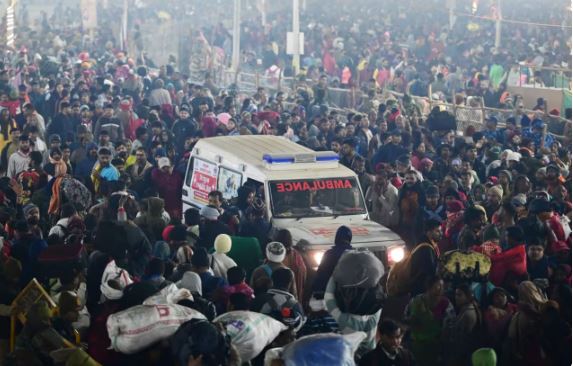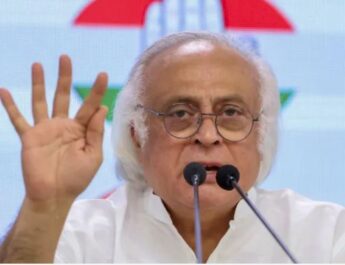Prayagraj: On the night of January 28, at approximately 1:30 AM, a stampede occurred in the Sangam Nose area of Prayagraj. By noon on January 29, the royal bath of Mauni Amavasya had taken place. However, the pressing question remains: who is accountable for the fatalities?
Discussions with local residents and anonymous officials, along with communications with devotees and subsequent investigations, reveal that this stampede was not an isolated incident. It was the culmination of errors that had been accumulating over the preceding two days. Despite a year of preparation and an expenditure of ₹7,535 crore, the arrangements for the Maha Kumbh are now being scrutinized. This raises the question of whether the negligence of five key officials contributed to the stampede.
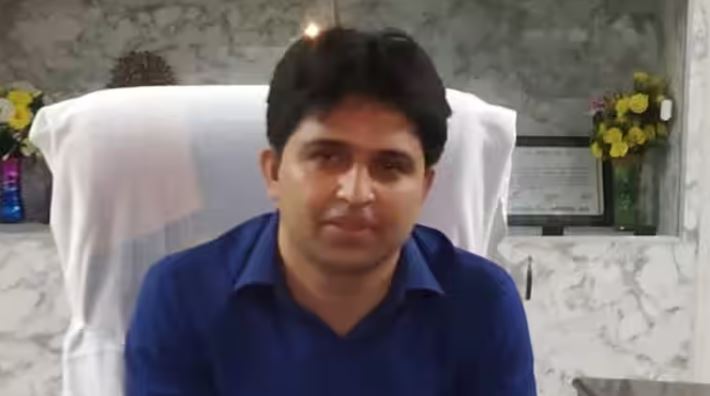
Vijay Kiran Anand
Vijay Kiran Anand, an IAS officer from the 2009 batch of the UP cadre, is tasked with overseeing the entire organization of the Maha Kumbh fair.
What went awry?
The pontoon bridges were closed, leading to a gathering of people and the subsequent stampede. On January 29, during Mauni Amavasya, millions were converging on Prayagraj from across the nation, with an estimated 16 million attendees at the fair. Despite the ongoing influx, the pontoon bridges remained crowded. A wireless communication from fair officer Vijay Kiran Anand ordered the cessation of crowd movement, resulting in the abrupt closure of pontoon bridge number 7.
After being delayed for five hours, the crowd erupted in violence. They became incensed upon witnessing the opening of the bridge for the vehicle of SDM Sadar. The SDM’s car was subjected to an attack, and there was a confrontation with the officers present. In response to the escalating anger of the crowd, pontoon bridges numbered 13, 14, and 15 were subsequently opened. Numerous videos surfaced showing individuals expressing their frustration about having to walk several kilometers due to the movement of VIPs.
The crowd continued to swell as a result of VIP movement. On January 27 and 28, the presence of VIPs during the Kumbh event significantly contributed to the gathering of people. On the 27th, the majority of pontoon bridges were closed, primarily due to the movements of notable figures such as Baba Ramdev, Home Minister Amit Shah, Arunachal Pradesh Home Minister Mama Natung, Kiren Rijiju, Milind Somen, Arun Govil, and Chris Martin, the lead singer of the American rock band Coldplay.
The closure of roads further exacerbated the situation, forcing ordinary citizens to walk considerable distances. The VIP movement is viewed as a major factor behind the closure of the pontoon bridges. There are allegations that the administration aimed to prevent large crowds of common people from congregating at Sangam during this period, leading to the decision to close the bridges.
Where did the error occur?
Mela officer Vijay Kiran Anand recognized the growing crowd but made an erroneous decision. He ordered the closure of the pontoon bridges starting January 27 as a precautionary measure for Mauni Amavasya.
Out of a total of 30 pontoon bridges, most remained closed on January 27 and 28. On January 27, only bridges numbered 13, 14, and 15 were operational. On January 28, only seven bridges—numbers 3, 14, 15, 17, 18, 19, and 22—were in use. On January 29, in anticipation of Mauni Amavasya, nine bridges—numbers 1, 2, 13, 14, 15, 17, 18, 19, and 22—were opened.
On the 27th and 28th, the closure of most bridges resulted in a significant congregation of individuals at a single location. Those intending to reach Sangam were unable to proceed towards the Akhara and were compelled to take a lengthy detour. Consequently, a substantial number of individuals opted to remain at Sangam Nose for bathing on Mauni Amavasya. Had all pontoon bridges been operational, devotees would have been able to navigate between locations with ease, thereby alleviating the crowding at the fair. Tragically, many individuals who were resting were caught in the ensuing stampede.
Rajesh Dwivedi
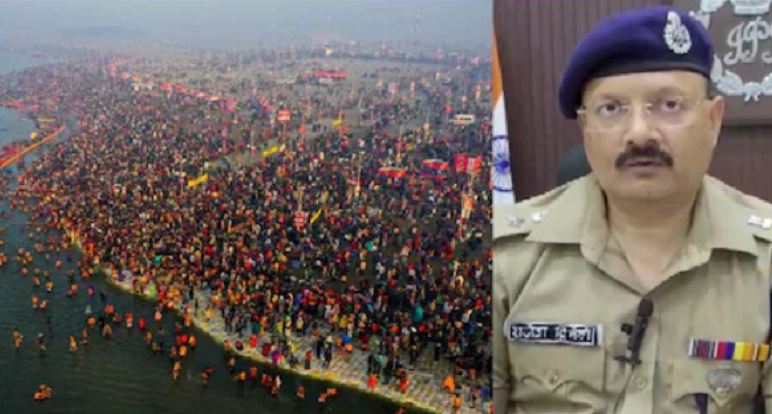
Promoted to Senior Superintendent of Police (SSP) in 2013, he is currently serving as the SSP for the Mela, overseeing security for the Maha Kumbh.
What was the oversight?
He failed to manage the escalating crowd and did not implement adequate arrangements for the flow of people. Two primary factors contributed to the stampede. Firstly, a large assembly formed at Sangam Nose, while many individuals chose to sleep adjacent to the barricades. As the crowd swelled, the barricades collapsed, resulting in the tragic crushing of those resting. The second factor identified was the rumor regarding the arrival of Naga sadhus for bathing. Rajesh Dwivedi was tasked with managing both situations, yet with 1.5 million people bathing at Sangam Nose and only 1,000 police officers available, the situation proved unmanageable.
The situation involved a significant gathering of individuals. Many people were resting at Sangam, while millions were en route to Sangam Nose for the Amrit Snan. During this period, the actions of Rajesh Dwivedi remain in question. It is noteworthy that despite the risk of a stampede, over ten million individuals bathed at Sangam on January 29. The cumulative number of participants in the Maha Kumbh has surpassed seventy million, with approximately 280 million having bathed by January 29.
Vijay Vishwas Pant, the Commissioner of Prayagraj, is a member of the 2004 IAS batch and is tasked with overseeing the administration of the Maha Kumbh.
Issues Identified
Although there was a potential for a stampede, adequate measures were not implemented to mitigate this risk. A video has emerged in which Vijay Vishwas Pant urges devotees, stating, “All devotees should listen, there is no benefit in lying down here. Whoever sleeps will lose. Get up and take a bath. This is for your safety. Many more people will come, and there is a possibility of stampede. You are requested to wake up, wake up, wake up and don’t sleep.”
A critical question arises regarding why Commissioner Vijay Vishwas Pant publicly acknowledged the potential for a stampede due to the influx of additional attendees. If the administration was aware of the increasing crowd size, why was this announcement made over the microphone instead of taking proactive measures to enhance crowd control, increase personnel, and manage the flow of movement? As the crowd swelled at Sangam Nose and individuals began to doze off, the whereabouts of Commissioner Vijay Vishwas Pant are questioned. Why did he not engage with SSP Rajesh Dwivedi to address the escalating crowd situation?
Vinay Kumar Mishra is tasked with overseeing the administrative arrangements at Sangam Nose.
What was the error?
The officers were not informed about the growing crowd. The Sangam Nose area is located within Sector 3 of the Maha Kumbh. It is important to note that measures were indeed implemented to monitor the crowd. The Sector 3 Magistrate, Vinay Kumar Mishra, was tasked with observing the escalating crowd in this region, evaluating the situation, and promptly relaying information to the officers. However, he failed to communicate the details regarding the crowd surge at Sangam Nose, which was exacerbated by the closure of the pontoon bridge. The pressing question remains: where was he during the crowd’s escalation?
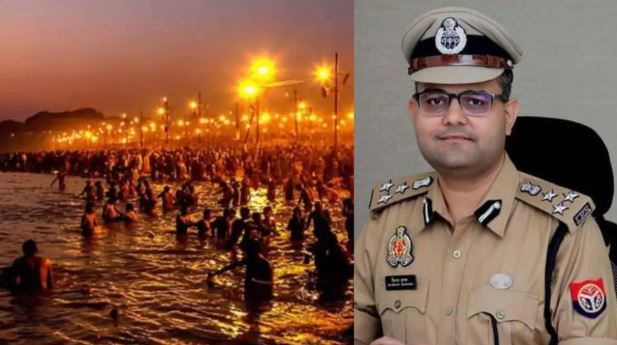
Vaibhav Krishna
He is an IPS officer from the 2010 batch of the UP cadre, currently serving as the DIG for Maha Kumbh. He is charged with overseeing the security arrangements for the event. His oversight lies in the inability to manage the crowd at Sangam Nose effectively. The pertinent question is why the DIG responsible for the control room confined his actions to video appeals. Vaibhav Krishna himself oversees the control room. In this context, it raises concerns about how he overlooked the growing crowd and the individuals who were unresponsive at Sangam Nose.

